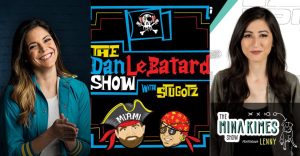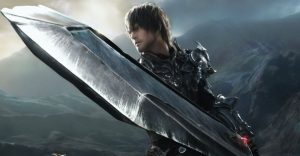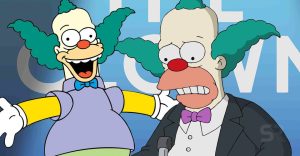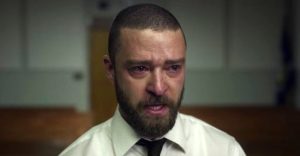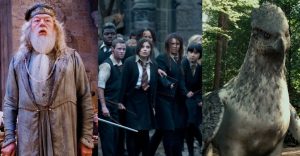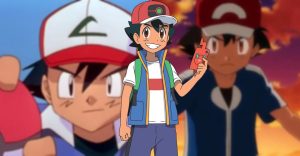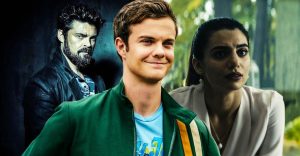WandaVision: Each Decade, Ranked By Pop Culture Accuracy

In WandaVision, Wanda, Vision, and the people of Westview lived their lives in a sitcom. With the Hex created and controlled by Wanda out of grief, each episode of WandaVision covered a decade of sitcom tropes, starting with the 1950s to 2000s, and paid tribute to several beloved sitcoms. The show even tried to showcase popular trends and aesthetics from each decade for each episode. Eventually, viewers learned that Wanda grew up watching old sitcoms with her family, which inspired her livelihood in a sitcom.
As people watch each episode that refers to a specific decade, it comes to question how accurate was each decade portrayed and designed in terms of pop culture accuracy. Did it cover the best movies and TV shows, music, fashion, politics, or sports from each time? Luckily, Marvel was on point with some episodes by covering the trendiest and significant pop culture moments for some decades. However, there were a few where they missed the mark.
6 The 1990s

Out of all the decades covered in the series, the 1990s felt the least noticeable decade that references its time’s prospective pop culture. Episode 6, “All-New Halloween Spooktacular!” was the main episode that referenced the 1990s, with episode 5, “On a Very Special Episode…” covering the earlier part of the decade. Because episode 6 was a Halloween episode, it missed several things that made the 1990s distinguishably the 1990s.
In the fifth episode, a few 1990s fashion trends were acknowledged, like the plaids and overalls. Fake Pietro showcased the decade’s most iconic fashion moments, like tattoos, leather jackets, and sleeveless tops. The sixth episode also showed a creepy Yo-magic commercial, which is likely a reference to Trix and Go-Gurt ads.
However, both episodes missed out on other fashion trends like blazers, baggy pants, leather dresses, and bucket hats. Both episodes did not show references to music like grunge rock, hip-hop, or pop despite their popularity in the 1990s. Surprisingly, the series failed to cover other popular sitcoms of the time, like Friends and Seinfeld.
5 The 1980s

Episode 5, “On a Very Special Episode…” was the only episode covering the 1980s. The show paid better homage to the 1980s, referencing Full House, Growing Pains, and Family Ties throughout its title sequence. It also covered a few bases of the decade’s fashion like bright-colored leggings, leg-warmers, headbands, vests, jeans, and casual pants. The series even nailed the weird curled hairstyles.
However, the 1980s are also explosive with pop culture trends. The series missed out on punk rock fashion, shoulder pads, checked blazers for women, sunglasses, and sweaters. People also recognize the 1980s for its music from artists like Madonna, Michael Jackson, and Cyndi Lauper. The 1980s were also famous for sci-fi films like Back to the Future, Star Trek, Alien, and Star Wars sequels alongside teen flicks like The Breakfast Club and Weird Science. Therefore, the series surprisingly missed several popular elements of this colorful decade.
4 The 2000s

The 2000s fared better in showing the pop culture of its time. However, the high accuracy of the 2000s may be because they were not too long along. Both episode 6, “All-New Halloween Spooktacular!” and episode 7, “Breaking the Fourth Wall,” highlighted the 2000s. Both episodes had opening sequences that paid homage to shows like Malcolm in the Middle and The Office, both noticeably recognized and on point to the original versions. They covered the popular 2000s TV sitcom tropes like breaking the fourth wall like in Malcolm in the Middle. The series even paid homage to mockumentary sitcoms like The Office and Modern Family. Even the Nexus commercial replicates the 2000s era of medicine commercials.
The fashion statement of the 2000s was also recognizable with tracksuits, casual shirts and pants, and skinny jeans, although it did miss a few things like emo fashion and geek chic. It even made small references to video games like Xbox.
Despite the series high accuracy of the 2000s, it did ignore other important pop culture moments. The 2000s showed the rise of Internet culture like Myspace, Facebook, and YouTube. Hip-hop and punk rock were distinguishable music moments in the 2000s. Premium cable dramas and reality shows were also rising in popularity. Although it missed these 2000s pop culture moments, the two episodes still show a good effort in portraying significant aspects of the time.
3 The 1950s

The show’s first episode, “Filmed Before a Live Studio Audience,” paid homage to the 1950s. Of course, the episode made several references that hinted at the 1950s aesthetic. Back in that time, all the movies and TV shows were in black-and-white. The first episode replicated the family-styled and upbeat sitcoms like I Love Lucy. However, the dinner scene also replicates the dark tones of The Twilight Zone.
The fashion was also on point, showcasing fit-and-flare dresses and poodle skirts for women and black shoes, sport coats, and fedora hats for men. Even the hairstyles scream the 1950s with the poodle cut of Lucille Ball and the short and curly hair for women and short sleek hair for men. Even popular food trends of the 1950s were mentioned, including Chicken à la King and steak Diane. Although the episode missed a few trends, like Greasers, jazz music, rock-and-roll, and pop art, the episode well-executed the 1950s pop culture that paid homage to the decade.
2 The 1960s

The show’s second episode, “Don’t Touch That Dial,” covered most of the 1960s and replicated several of its elements. The opening sequence was inspired by the 1960s show, Bewitched, with other homages to The Dick Van Dyke Show. Wanda’s experience in Westview to fit in with society also resembles the 1960s premise of the sitcom I Dream of Jeannie. The episode also captures a moment where TV shows and movies were transitioning to technicolor, and the final scene exemplified this transition.
The episode also showed popular fashion trends of the 1960s, including slim-fit pants, shapeless shift dresses, cardigans, sport coats, polo shirts, and sweater vests. It also highlighted popular 1960s hairstyles like the flipped bob and Aubrey Hepburn style updo. More BIPOC appeared in the 1960s, with the first on-screen appearances of “Geraldine” and “Herb” in the second episode. Their appearances may reference the political climate of the civil rights movement during the 1960s. Although the second episode missed a few pop culture moments like Beatlemania, rock-and-roll music, Motown, pixie haircuts, and girl groups, the 1960s were still one of the best portrayed decades featured on the show.
1 The 1970s

The best decade honored in WandaVision was the 1970s in episode 3, “Now in Color,” and partially in episode 4,” “We Interrupt This Program.” It perfectly captures the essence and style of the groovy and colorful 1970s. The opening sequence replicates the grid style of The Brady Bunch. The show also pays homage to other classic 70s sitcoms like The Partridge Family and The Mary Tyler Moore Show. Wanda and Vision’s home copies the wooden cap and black railing staircase from The Brady Bunch. The episode also featured other aspects of the 1970s interior design like the “sunken” living rooms, floral furniture, wooden kitchens, and striped walls.
The episode also showed popular fashion trends like bell bottoms, pantsuits, peace sign necklaces (in the show’s case, it was a SWORD symbol), platform shoes, and minidresses. It also showcased popular hairstyles like afros, The Farrah Fawcett hairdo, medium shoulder cuts, and long and straight hair. Facial trends for men were highlighted, like mustaches and sideburns. There is also a reference to the feminist movement of the 1970s. This mention of the social movement occurred when “Geraldine” told Wanda about her boss, who gave her a promotion.
The third episode is also one of the rarest ones that paid homage to popular music from the 1970s. A version of “Daydream Believer” by the Monkees played in closing segments of the fourth episode. Although the third and fourth episodes missed a few popular 1970s trends, like disco, rock music, and the hippie movement, the 1970s was the most pop-culture accurate out of all the decades shown in WandaVision.
About The Author











